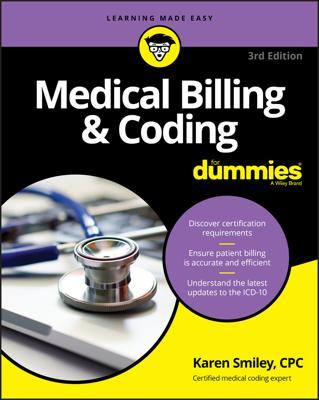Although many people refer to medical billing and coding as if it were one job function, billing and coding really are two distinct careers. Here is a brief description of the tasks and functions associated with each job and give you some things to think about to determine which path you want to pursue:
The medical coder deciphers the documentation of a patient’s interaction with a healthcare provider (physician, surgeon, nursing staff, and so on) and determines the appropriate procedure (CPT) and diagnosis code(s) to reflect the services provided.
The biller then takes the assigned codes and any required insurance information, enters them into the billing software, and then submits the claim to the payer (often an insurance company) to be paid. The biller also follows up on the claim as necessary.
Both medical billers and coders are responsible for a variety of tasks, and they’re in constant interaction with a variety of people (you can read about the various stakeholders in Part V). Consider these examples:
Because they’re responsible for billing insurance companies and patients correctly, medical billers have daily interaction with both patients and insurance companies to ensure that claims are paid in a reasonable time.
To ensure coding accuracy, coders often find themselves querying physicians regarding any questions they may have about the procedures that were performed during the patient encounter and educating other office staff on gathering required information.
Billers (but sometimes coders, too) have the responsibility for explaining charges to patients, particularly when patients need help understanding their payment obligations, such as co-insurance and copayments, that their insurance policies specify.
When submitting claims to the insurance company, billers are responsible for verifying the correct billing format, assigning the proper modifier(s), and submitting all required documentation with each claim.
In short, medical billers and coders together collect information and documentation, code claims accurately so that physicians get paid in a timely manner, and follow up with payers to make sure that the money finds its way to the client’s bank account. Both jobs are crucial to the office cash flow of any healthcare provider, and they may be done by two separate people or by one individual, depending upon the size of the office.

